Medieval Marvels: A Gothic & Romanesque Journey
Explore Wrocław's rich early medieval history and marvel at stunning Gothic and Romanesque landmarks on this engaging free walking tour.
Time
3 Hours
Stops
9 Places
Distance
3.0 km
Ostrów Tumski
Begin your journey in Wrocław's oldest part, Ostrów Tumski, a picturesque island that was the heart of the city in the early Middle Ages, featuring stunning Gothic and Romanesque architecture.
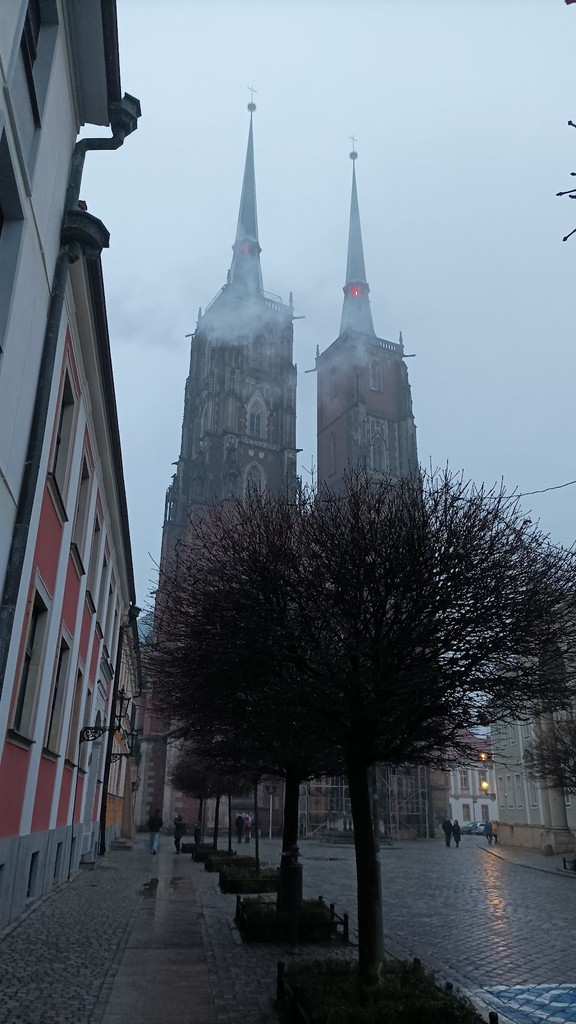
Ostrów Tumski (Source: Google Maps)
Ostrów Tumski, the oldest part of Wrocław, is a charming island steeped in history. This area was the city's heart during the early Middle Ages, serving as a crucial religious and administrative center. The island is adorned with stunning Gothic and Romanesque architecture, showcasing the evolution of styles through the centuries. Visitors can admire the intricate designs of the buildings, many of which date back to the 10th century. The atmosphere is serene, with cobblestone streets and beautiful views of the Odra River. The island's historical significance is further highlighted by its role as the site of the first cathedral in Wrocław, a testament to the city's religious heritage.
Church of St. Giles
Explore one of the oldest Romanesque structures in Wrocław, offering a glimpse into the architectural style of the early Middle Ages.
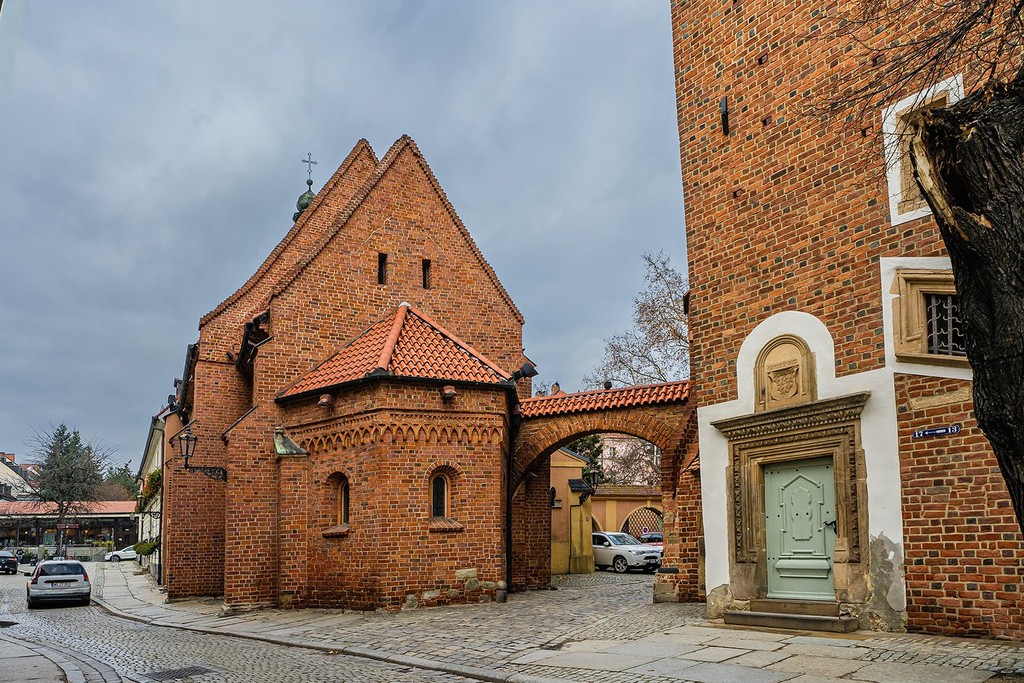
Church of St. Giles (Source: Google Maps)
The Church of St. Giles stands as one of Wrocław's oldest Romanesque structures, offering a glimpse into the architectural style of the early Middle Ages. This sacred site features characteristic round arches and sturdy columns typical of Romanesque architecture. Its construction began in the 11th century, and it has undergone several renovations throughout the years, preserving its medieval charm while adapting to contemporary needs. The church's interior is adorned with remarkable frescoes and altarpieces that reflect the artistic traditions of the time. St. Giles is not only a place of worship but also a vital piece of Wrocław's historical puzzle, representing the city's religious evolution and architectural heritage.
Cathedral of St. John the Baptist
Discover this magnificent Gothic cathedral, renowned for its striking towers and rich history dating back to the 13th century.
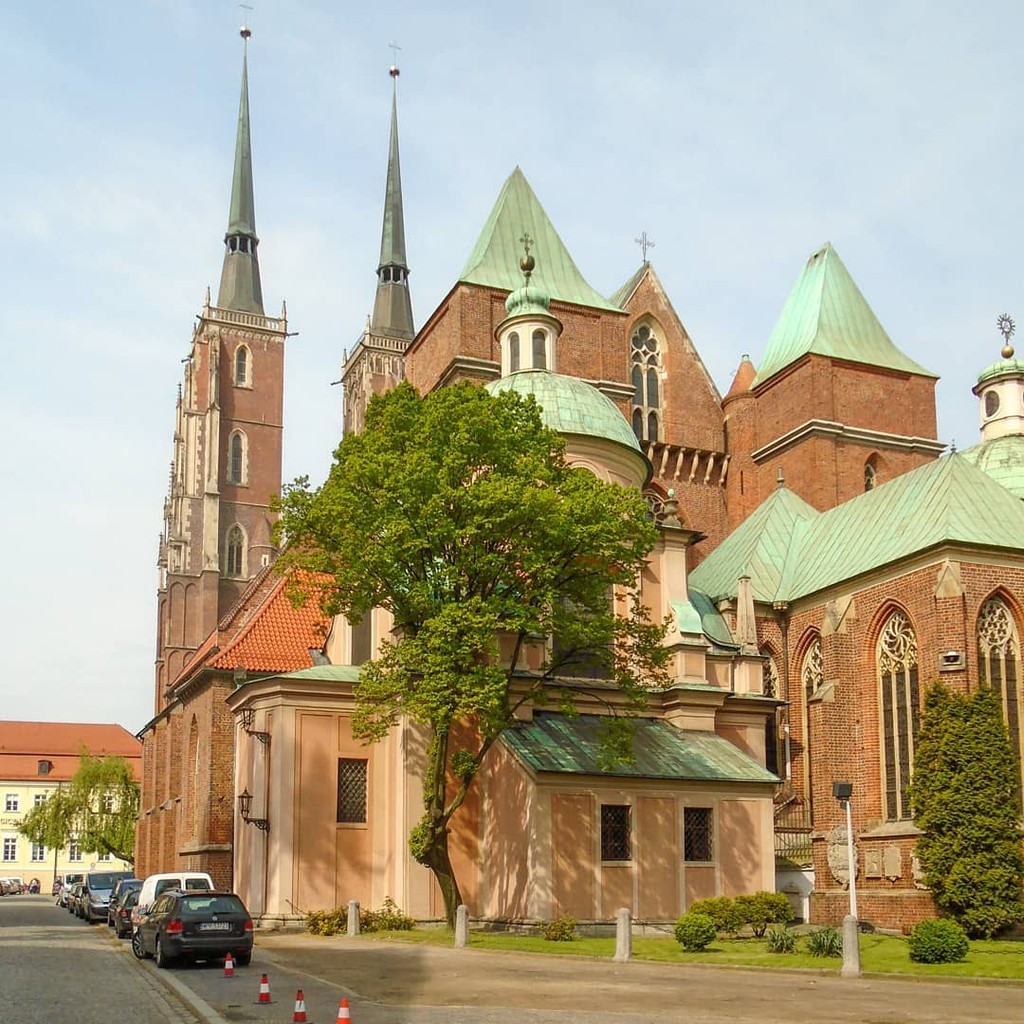
Cathedral of St. John the Baptist (Source: Google Maps)
The Cathedral of St. John the Baptist is a magnificent example of Gothic architecture, renowned for its striking twin towers that dominate the Wrocław skyline. Dating back to the 13th century, this cathedral has witnessed numerous historical events and renovations, reflecting the turbulent history of the region. The interior is equally impressive, featuring stunning stained glass windows that illuminate the space with vibrant colors. The cathedral also houses valuable artworks and relics, making it a significant cultural and religious site. Visitors can explore its chapels and admire the intricate details of its design, which showcases the craftsmanship of the Gothic period and the cathedral's enduring importance to the city's identity.
Wrocław University
Head to Wrocław University, where the Baroque architecture complements the city's historic atmosphere, and visit the Aula Leopoldina for its awe-inspiring interiors.
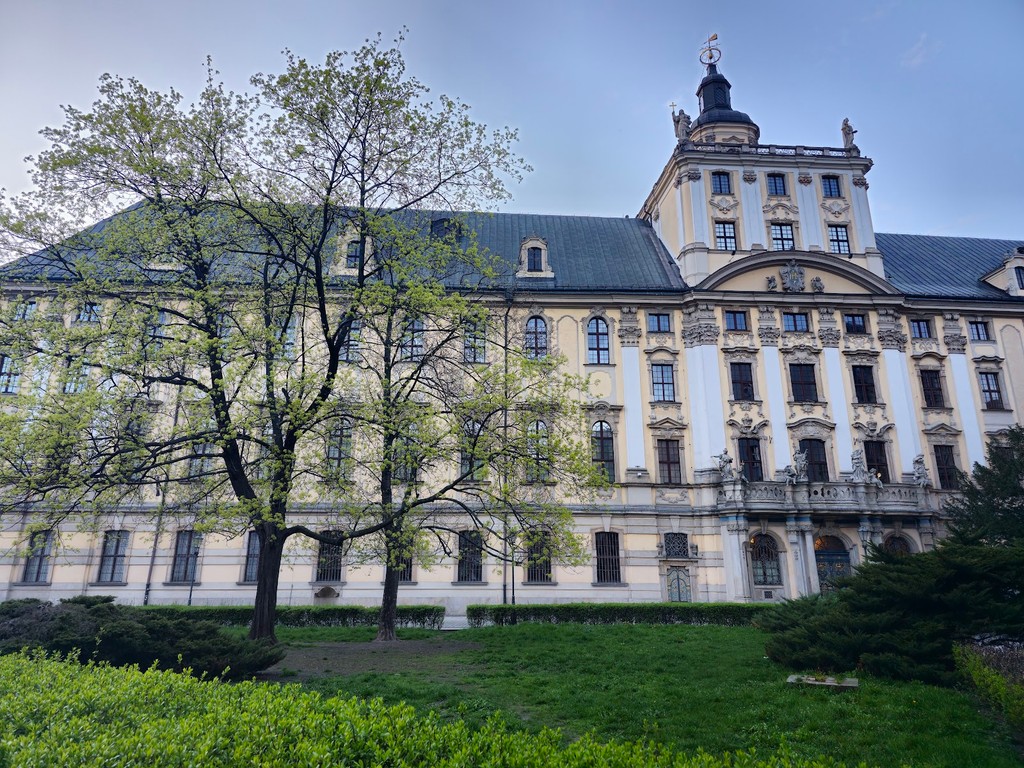
Wrocław University (Source: Google Maps)
Wrocław University is an architectural gem that combines Baroque elegance with the city's rich academic history. Founded in 1702, the university has played a crucial role in the intellectual development of the region. The Aula Leopoldina, the university's ceremonial hall, is particularly noteworthy, boasting stunning frescoes and intricate decor that reflect the grandeur of the Baroque style. The university's campus is a blend of historical and modern buildings, creating a vibrant atmosphere for students and visitors alike. Its libraries and museums house invaluable collections, making it a center of learning and culture. As you stroll through the grounds, you'll feel the weight of history and the spirit of inquiry that has thrived here for centuries.
St. Elizabeth's Church
Admire the Gothic architecture of St. Elizabeth's Church, known for its impressive tower offering panoramic views of the city.
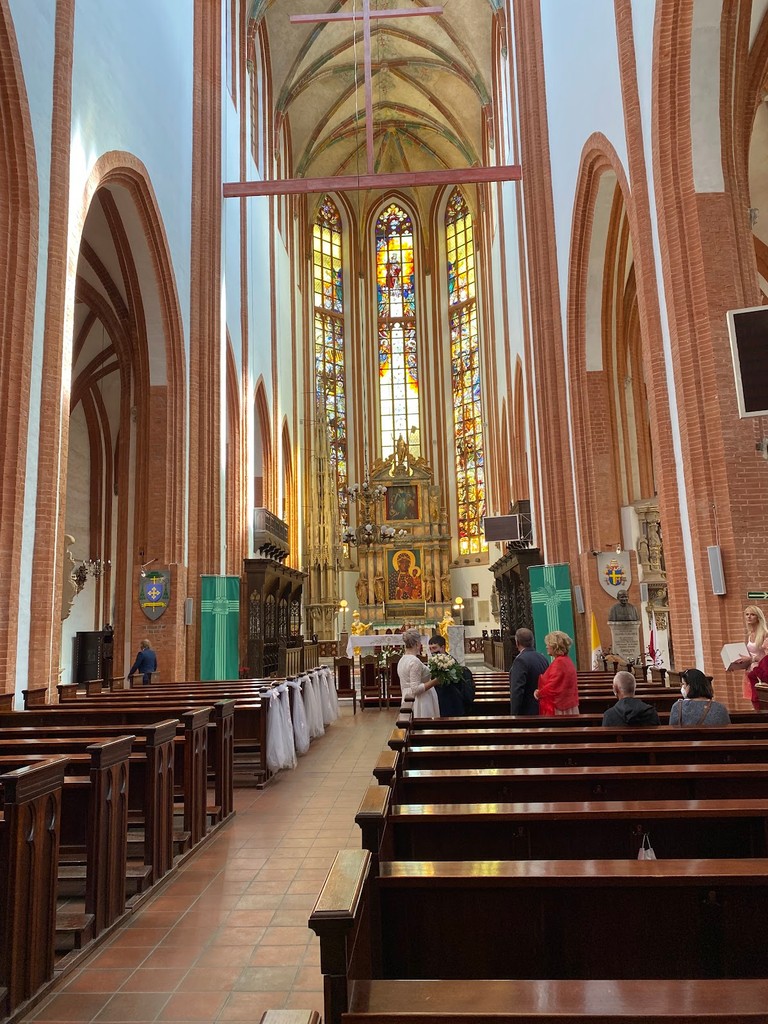
St. Elizabeth's Church (Source: Google Maps)
St. Elizabeth's Church is a stunning example of Gothic architecture, recognized for its impressive tower that offers panoramic views of Wrocław. Built in the 14th century, the church showcases the intricate stonework and soaring arches characteristic of the Gothic style. Inside, visitors can admire the beautiful altars and stained glass windows that depict biblical scenes and saints. The church has long been a place of worship and community gatherings, reflecting the city's spiritual life. Its tower, one of the tallest in Wrocław, is a popular attraction for those seeking a breathtaking view of the cityscape. St. Elizabeth's Church stands as a testament to the city's architectural heritage and its enduring significance in the hearts of its residents.
Market Square (Rynek)
Walk to the vibrant Market Square, the heart of the city, surrounded by colorful Gothic and Renaissance buildings, and a perfect spot for general sightseeing.
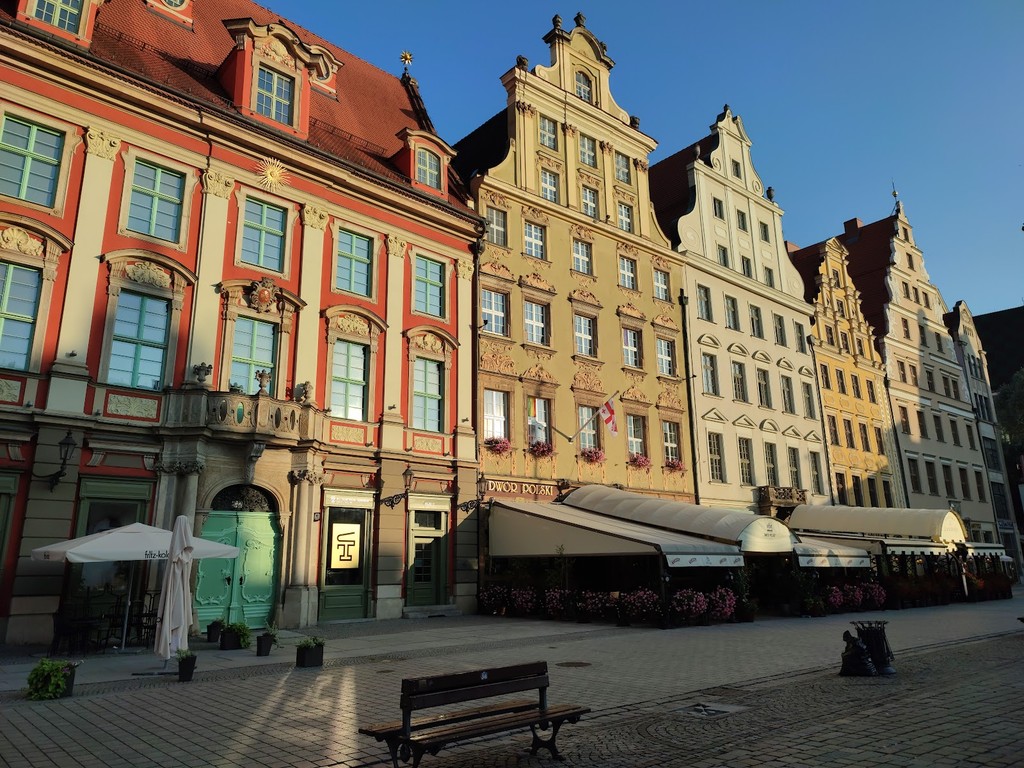
Market Square (Rynek) (Source: Google Maps)
Market Square, or Rynek, is the vibrant heart of Wrocław, surrounded by colorful Gothic and Renaissance buildings that reflect the city's historical significance as a trading hub. This bustling square has been a center of commerce and social life since the Middle Ages, making it one of the largest market squares in Europe. The square is home to numerous cafes, shops, and street performers, creating a lively atmosphere for both locals and tourists. The architecture of the buildings, with their ornate facades and intricate details, tells the story of Wrocław's rich past. Visitors can enjoy leisurely strolls, partake in local events, or simply relax while soaking in the sights and sounds of this dynamic urban space.
Wrocław Town Hall
Explore the Gothic-style Wrocław Town Hall, an architectural masterpiece that stands as a symbol of the city's rich history.
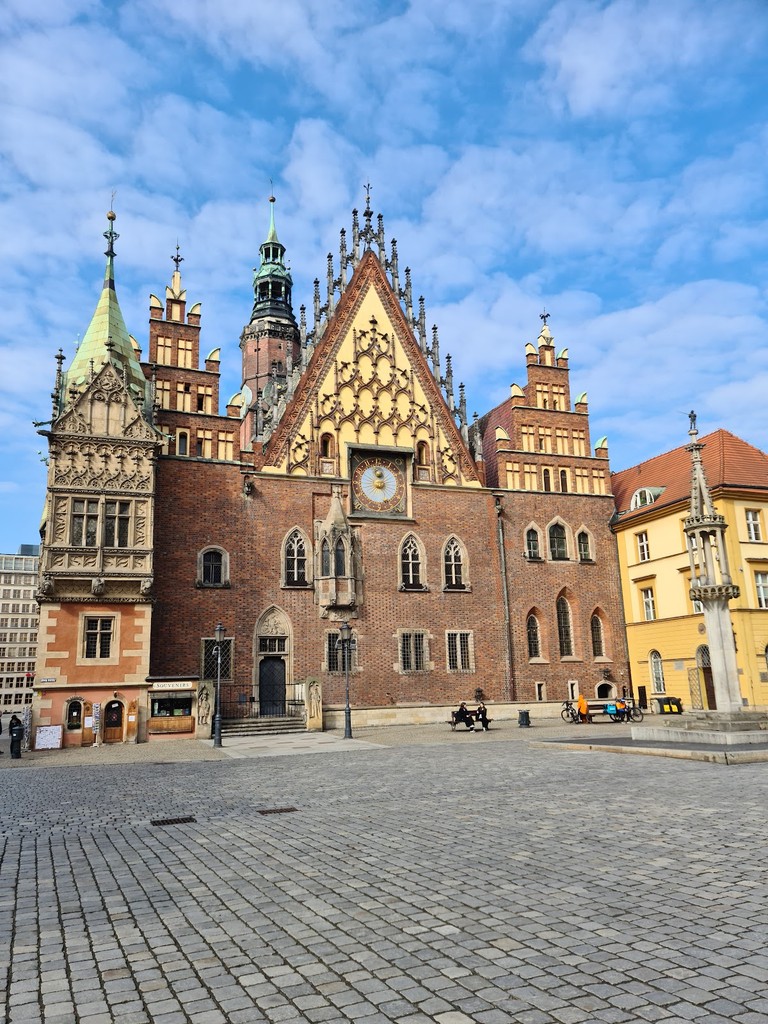
Wrocław Town Hall (Source: Google Maps)
The Wrocław Town Hall is an architectural masterpiece of Gothic design, standing as a symbol of the city's rich history and civic pride. Built in the late 13th century, the town hall features a distinctive façade adorned with intricate sculptures and decorative elements that showcase the craftsmanship of the era. Inside, the hall boasts beautifully preserved interiors, including the grand assembly hall, which hosts various cultural events and exhibitions. The building has served as the center of municipal governance for centuries, witnessing the evolution of Wrocław's political landscape. Visitors can explore its historical significance and admire the harmonious blend of functionality and artistry that defines this iconic structure.
Church of St. Mary Magdalene
Visit this Gothic church, notable for its twin towers and the "Penitent Bridge" offering a unique perspective of the city.
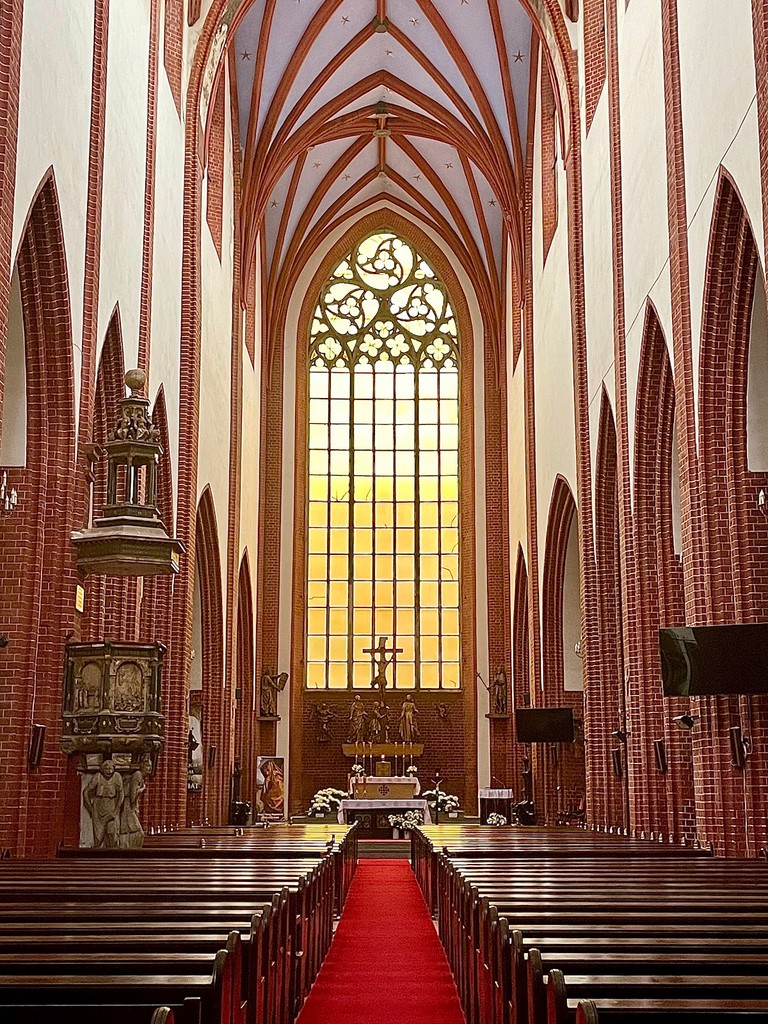
Church of St. Mary Magdalene (Source: Google Maps)
The Church of St. Mary Magdalene is a notable Gothic church in Wrocław, distinguished by its twin towers and the famous "Penitent Bridge" that connects the church to the adjacent tower. Built in the 14th century, the church features stunning architectural details, including ribbed vaults and intricate stained glass windows. The twin towers, which soar above the city, are a prominent feature of Wrocław's skyline. The Penitent Bridge, with its unique design, offers visitors a chance to reflect on the church's history and the spiritual journeys of those who have crossed it. Inside, the church houses numerous artworks and relics, making it a significant site for both worship and cultural appreciation.
Racławice Panorama
Conclude your tour with a visit to the Racławice Panorama, a monumental cycloramic painting depicting the Battle of Racławice, adding a cultural touch to your historical exploration.
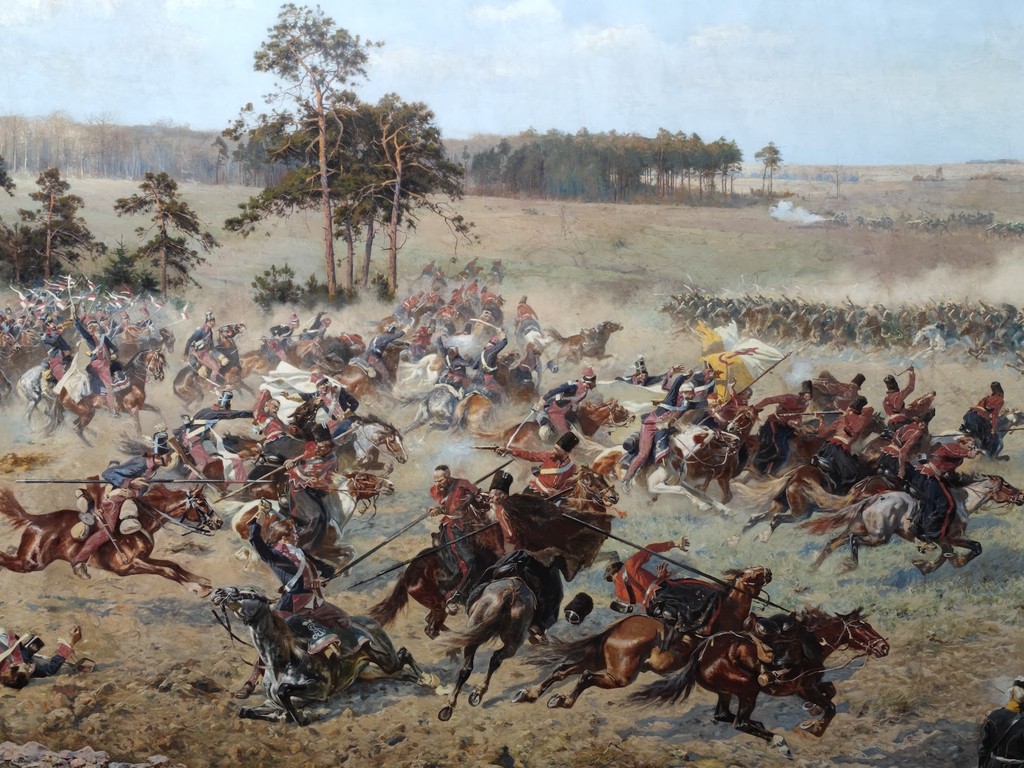
Racławice Panorama (Source: Google Maps)
The Racławice Panorama is a monumental cycloramic painting that depicts the Battle of Racławice, a pivotal event in Polish history. Created in the late 19th century, this impressive artwork measures 114 meters in length and 15 meters in height, immersing viewers in the dramatic scene of the battle. The panorama is housed in a specially designed rotunda, allowing visitors to experience the painting's grandeur from various angles. It serves as a powerful reminder of Poland's struggle for independence and the valor of its people. The Racławice Panorama not only showcases artistic excellence but also plays a vital role in preserving and presenting Polish history and culture, making it a must-visit landmark for anyone exploring Wrocław.

Your travels, your rules.
Create your own Free Walking Tours.
Set your preferences, distances and anything you want to do or see.
Completely free, no payment required.